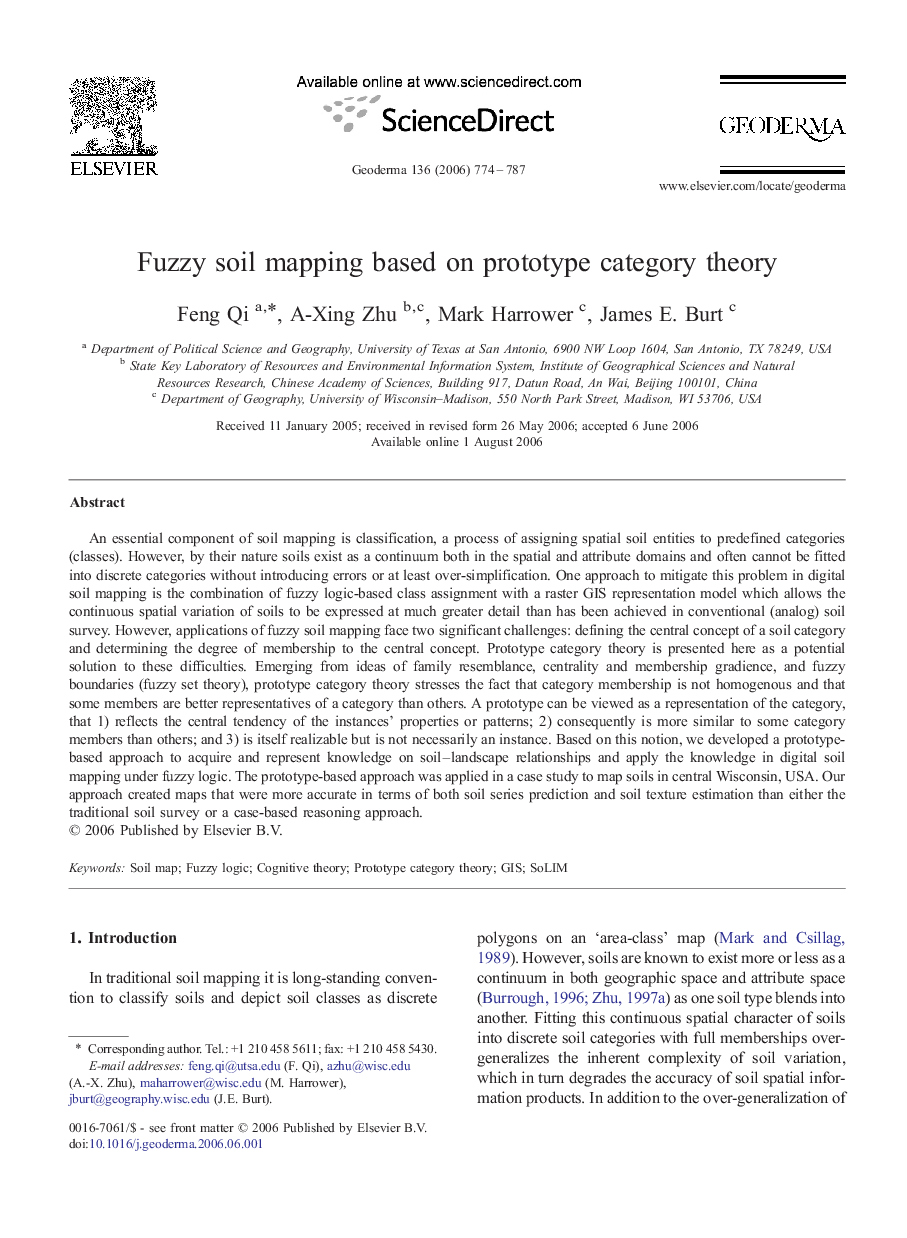| کد مقاله | کد نشریه | سال انتشار | مقاله انگلیسی | نسخه تمام متن |
|---|---|---|---|---|
| 4575649 | 1629560 | 2006 | 14 صفحه PDF | دانلود رایگان |

An essential component of soil mapping is classification, a process of assigning spatial soil entities to predefined categories (classes). However, by their nature soils exist as a continuum both in the spatial and attribute domains and often cannot be fitted into discrete categories without introducing errors or at least over-simplification. One approach to mitigate this problem in digital soil mapping is the combination of fuzzy logic-based class assignment with a raster GIS representation model which allows the continuous spatial variation of soils to be expressed at much greater detail than has been achieved in conventional (analog) soil survey. However, applications of fuzzy soil mapping face two significant challenges: defining the central concept of a soil category and determining the degree of membership to the central concept. Prototype category theory is presented here as a potential solution to these difficulties. Emerging from ideas of family resemblance, centrality and membership gradience, and fuzzy boundaries (fuzzy set theory), prototype category theory stresses the fact that category membership is not homogenous and that some members are better representatives of a category than others. A prototype can be viewed as a representation of the category, that 1) reflects the central tendency of the instances' properties or patterns; 2) consequently is more similar to some category members than others; and 3) is itself realizable but is not necessarily an instance. Based on this notion, we developed a prototype-based approach to acquire and represent knowledge on soil–landscape relationships and apply the knowledge in digital soil mapping under fuzzy logic. The prototype-based approach was applied in a case study to map soils in central Wisconsin, USA. Our approach created maps that were more accurate in terms of both soil series prediction and soil texture estimation than either the traditional soil survey or a case-based reasoning approach.
Journal: Geoderma - Volume 136, Issues 3–4, 15 December 2006, Pages 774–787